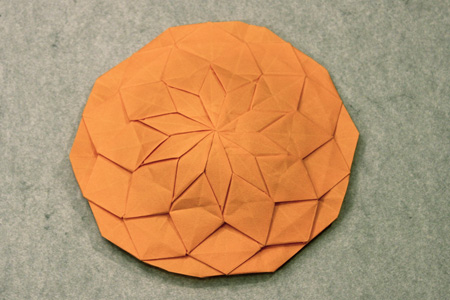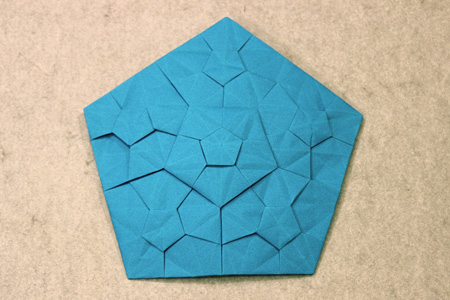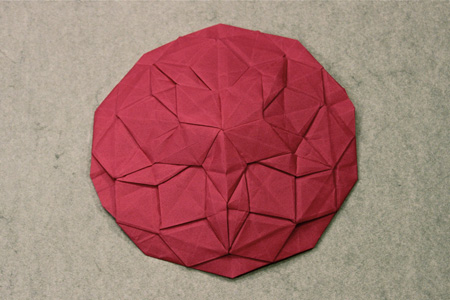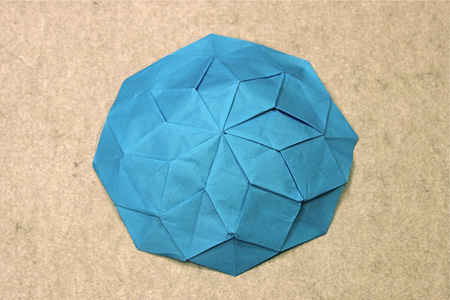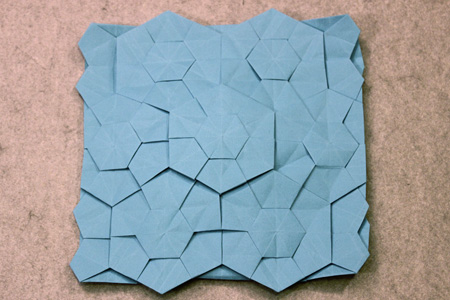I’ve be working on my origami site, adding new photos, new models, and updating the site templates to create new and improved layouts and to provide new ways to access the models by subject and chronologically. This isn’t done yet but should be along pretty soon.
I took new pictures of many of my tessellations. This is part of my getting-to-know-your-camera-better campaign, and while I was at it I shot some more test video for my book. I think I have a setup worked out now. One important change is I moved from my kitchen down to my studio to avoid having to break down every time it’s time to eat. The reason I was in the kitchen in the first place is that it gets lots of beautiful natural light. But this time of year I’m never even home in the limited daylight hours, so it’s a bit moot.
So now, down in the studio I have the camera on a tripod on the table, pointed straight down, and I have a sheet of light grey marble Wyndstone under the work. This is a nice, clear look. The thing that amazes me is how much light you really need. I opened of the f-stop, lengthened the exposure, and went to a higher (virtual) film speed, but my shots were still coming out dark. I turned on all the lights in the room, and ended up bringing in three 250-watt lights. One was from my living room, so I think I may go out and get a couple studio lamps going forward. Even so, this did the trick and I was able to capture clear, sharp video and stills.
One more thing I have to master with this camera is color balance. I left this on auto and it seemed to skew toward the warm side, as if it thought it was shooting in daylight. Another interesting side effect can be seen in the images here. The background is a neutral grey, but the camera skews it to be a weak complimentary color to the subject, which in this case happen to be strong, single colors. Very interesting.
